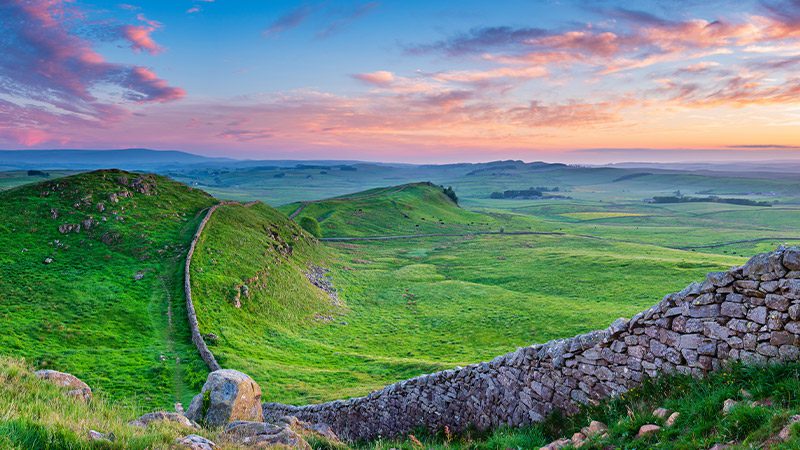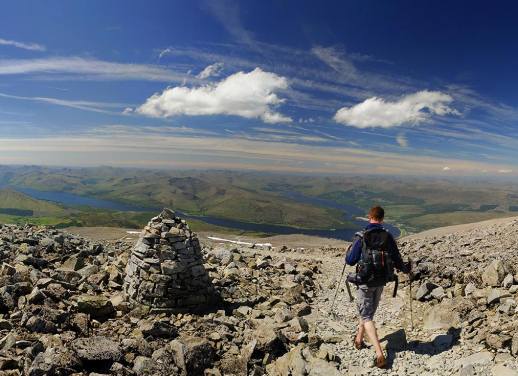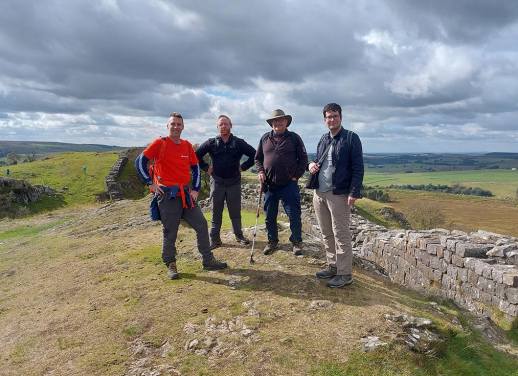Follow in the footsteps of the Romans and uncover thousands of years of history on the Hadrian’s Wall Walk.
It’s safe to say Roman Emperor, Hadrian knew a thing or two about building things. And Hadrian’s Wall was arguably his greatest achievement. But here’s the thing: it’s so much more than a wall. It was a land border, a bustling settlement, and a marker of the northwestern frontier of the Roman Empire – for just under 300 years. It stretches 73 miles (117 km) from coast to coast across northern England, and took 15,000 men six years to build. Phew.
Fast forward a couple of thousand years and Hadrian’s Wall has earned its place as one of the Great Walks of Europe. It’s littered with fascinating ruins and archeologists continue to discover ancient artefacts that offer a glimpse into life in this bygone era.
Here are some of the must-visit ruins and landmarks along Hadrian’s Wall. Who knows, you might even stumble on a live excavation site along the way (not literally, we hope).
1. Sycamore Gap
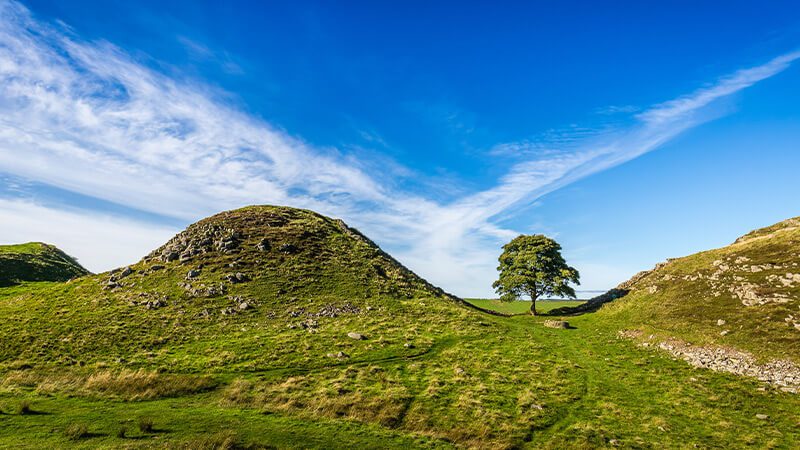
Why is a tree on this list, we hear you ask. Well, this isn’t your average tree. This lone sycamore is the most photographed tree in the country thanks to its perfect positioning between two hills. You might even recognise it from the 1991 blockbuster, Robin Hood: Prince of Thieves starring Kevin Costner and Morgan Freeman. The steep uphill walk to Sycamore Gap will get your heart pumping, but the views are totally worth it.
WALK HADRIAN’S WALL IN 7 DAYS WITH A LOCAL LEADER
2. Thirwall Castle
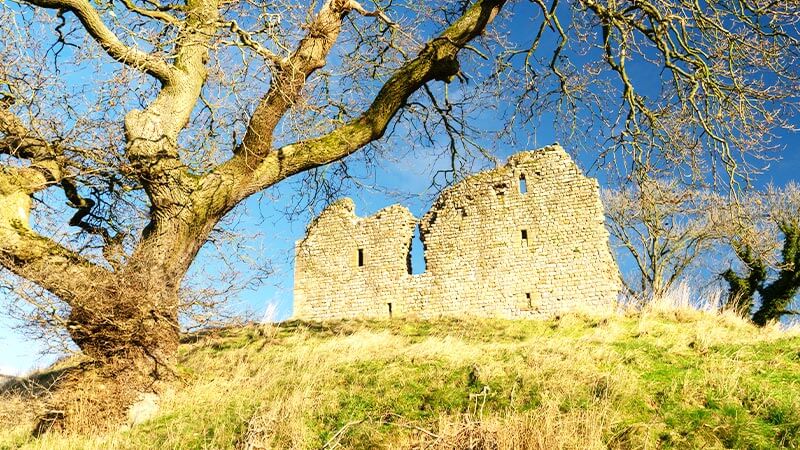
Sat on the banks of the Tipalt River, the ruins of 12th century Thirwall Castle look like they belong in a fairytale. But life was far from a fairytale here in the Middle Ages. Cross-border raids, violent robberies and bloody battles were the norm along the border. The rich Thirwall family built this fortified home to protect themselves with leftover construction materials from Hadrian’s Wall. If these crumbling walls could talk, they’d have a few tales to tell.
3. Birdoswald Fort
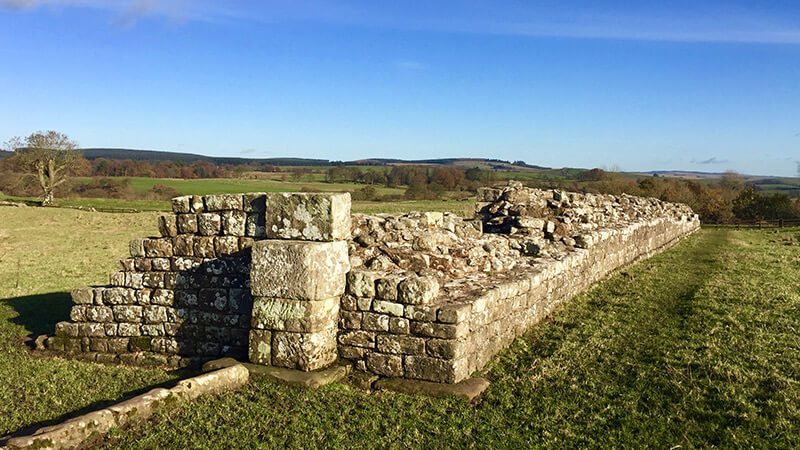
History lovers can nerd out at Birdoswald Fort (or ‘Banna’ as Roman soldiers called it), which is located near one of the most well-preserved sections of Hadrian’s Wall. The fort was originally a Roman military base and housed up to 1,000 men. The Romans left Britain in 400AD, but archaeological evidence shows life continued here long after. When you’ve finished exploring the fort ruins, check out the museum to learn about Birdoswald’s bloody battles and discover ancient relics including Roman burial urns.
4. Housesteads Fort
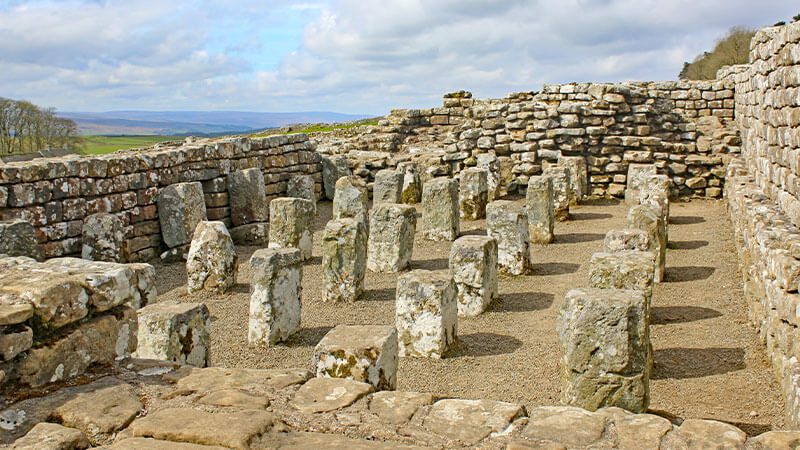
Built on a dramatic escarpment about halfway along the trail, Housesteads Fort is one of Britain’s most impressive and complete examples of a Roman fort. The walls reach up to 10 feet tall in sections, and you can also see the ruins of a barracks block, hospital, bathhouse and communal toilets. The sweeping views of Northumberland National Park from the top of the crag are just as impressive. Check out the museum afterward to see treasures excavated from the site, including Roman altars, jewellery and tools.
5. Chesters Fort
The Romans had a reputation for their elaborate bathhouses that featured hot and cold rooms, swimming pools and social areas. Chesters Fort is the most complete Roman cavalry fort in Britain with a very well-preserved bathhouse, steam room and officers’ quarters.
6. Vindolanda
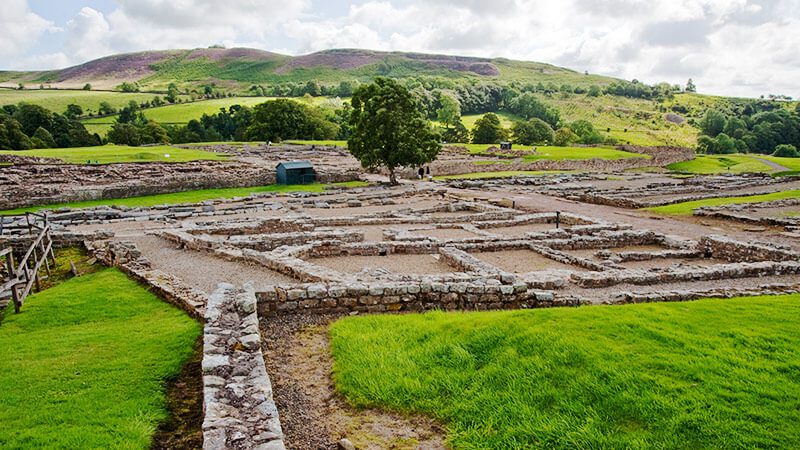
Vindolanda was built long before Hadrian’s Wall, but it was an important garrison and base for the construction of it. Only 24% of Vindolanda has been excavated (meaning there are still 150 years of work to do!), but you can already see the ruins of fort walls, the Commanding Officer’s house, barracks and more.
Excavations happen every year and new items added to the collection, including jewellery, religious relics, leather shoes and pottery. The most exciting discovery were wooden writing tablets which soldiers used to write diary entries, troop deployments, party invitations, and letters requesting underwear and socks.
If you’re planning a trip between May and October, don’t forget to buy your Hadrian’s Wall Path Passport. By the time you reach the end of the walk, you’ll have seven stamps and can claim your well-earned certificate of completion. Plus, your proceeds will go towards the maintenance of these incredible sites. Double pat on the back for you.
Uncover the history of these ruins on a Hadrian’s Wall tour.

